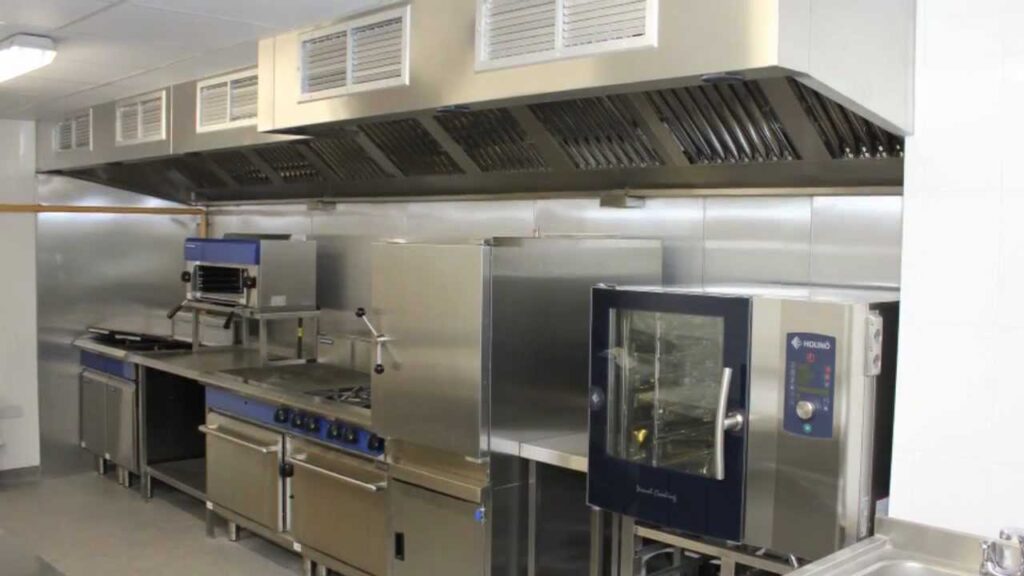When deciding on the layout of your commercial kitchen, you should start by establishing your menu. No kitchen can be generic – you should determine what your food service will be and what type of equipment you will need. In this article, we’ll go over some of the essentials that every commercial kitchen should include. These are: Organisation, Workflow efficiency, and Modularity. Once you have determined these key factors, you’ll be well on your way to designing your kitchen.
Workflow efficiency
In today’s world, chefs are responding to consumer demands for local and fresh foods. With increased transparency, consumers are increasingly demanding information about where their food comes from. This is impacting kitchen workflow design. In addition to increasing menu choice, fresh and local products require more preparation space. Whole proteins may need to be deboned or cut. Similarly, prepared seafood may need to be cut or marinated. In order to increase efficiency, kitchen designers should consider these considerations when designing a commercial kitchen.
The workflow in a commercial kitchen plays a significant role in the efficiency of the kitchen. A small restaurant can manage its work independently, while a larger restaurant needs a clear workflow that separates each section. While reception greets guests and waiters take orders, the kitchen prepares the food and serves it. Each section has its own specific workflow and operations. In order to optimize efficiency, it should follow these processes to minimize waste and enhance productivity.
A poorly designed commercial kitchen can be a huge hindrance to productivity. Not only will a poorly-designed kitchen hinder productivity, it can also negatively impact workflow. Inadequate cooking space and a lack of washing space can result in accidents and affect business. Consider a redesign that aims for efficiency. This way, you will ensure that your kitchen’s workspace is optimal and your staff will be productive.
The commercial kitchen has several unique challenges. It’s a high-temperature environment, crowded space, multiple people, and tight turn-around time. Efforts should be prioritized to maximize productivity. However, there’s no reason to sacrifice quality and safety if you can save time. For example, if third-party ordering is a high-volume activity in your kitchen, you should separate it from eat-in production, which increases your production time. This way, you’ll have two sets of staff working in the kitchen during peak periods.
Safety
Keeping food safe is an essential part of a foodservice operation. Although sanitation falls largely to the staff, designing a kitchen with sanitation needs in mind will help make cleanup easier. The design of the kitchen should take into account local codes, such as the distance between food preparation areas and waste disposal stations, and hand washing sinks. Listed below are some tips to keep your commercial kitchen safe and healthy. They will also help you meet a range of standards.
Luminance: The level of luminance in your commercial kitchen will vary depending on the materials and finishes used. You will need adequate lighting in order to work efficiently. Emergency lighting is an essential element of any kitchen, which automatically turns on from its own power supply in the event of an emergency. If you are unsure of how to best set up emergency lighting, consult a qualified electrical engineer. Choosing a lighting plan with the right levels of luminance is essential for ensuring food safety.
Layout: When planning your commercial kitchen, consider the types of dishes that will be served. If your menu is complex, consider creating zones for different tasks. For instance, you might want to use one section of the kitchen for preparation of complex items, and another for serving up simple meals. You should also consider where windows and doors are located. Finally, consider the location of electrical outlets. Once you know which areas will be most frequently used, you can plan your kitchen layout accordingly.
Lastly, make sure your commercial kitchen is compliant with local codes. Different organizations regulate food preparation and storage, including the FDA and the municipal health department. The health department and state department of agriculture will be responsible for inspecting and licensing wholesale operations. Your kitchen must also meet all these requirements in order to keep your customers safe. If you don’t have a plan in place, a design consultant can help you achieve compliance.
Organisation
The organisation of a commercial kitchen is an essential element of any restaurant. It demonstrates the level of detail and commitment the establishment wants to put into its offerings. By working together to create an efficient, well-organized system, restaurant owners and chefs can make back-of-the-house operations more efficient and profitable. Here are some helpful hints for effective kitchen organisation. Once you have the fundamentals of commercial kitchen organisation figured out, you can focus on improving the quality of your food service.
One of the most important aspects of organisation in a commercial kitchen is its ability to facilitate employee productivity. When everything is organised, the chef spends less time looking for an ingredient or searching for a specific tool, and he or she can respond to customers faster and more efficiently. The same goes for the kitchen itself. A well-organised kitchen has a proper work flow, including a good amount of space and tools.
The organization of a commercial kitchen can be a challenge. While it’s true that this area can be hectic and cluttered, it’s also a high-risk environment for food safety. If a kitchen is unorganized, it could result in poor quality food, unhappy customers, and even injured workers. Moreover, customers are often more picky about the cleanliness and organisation of a commercial kitchen than in a typical restaurant.
The organisation of a commercial kitchen also includes a dining area. Employees who work long hours in a restaurant should have access to a dining area where they can eat without leaving the establishment. In addition to these, they need basic equipment for their tasks. Some entrepreneurs even plan to expand the restaurant premises and add additional space. So, keep in mind these tips for successful organisation of a commercial kitchen. They’ll make your business a success.
Modularity
One way to optimize space in a commercial kitchen is to incorporate modular elements. An inverted island concept, which puts the gear against the walls, is a good choice if staff can maneuver freely through the middle area. Alternatively, a galley-style kitchen is ideal if staff members can easily serve customers while standing at one end of the space. Both concepts offer advantages and disadvantages. Read on to learn more about each.
Modularity can be beneficial in many aspects of a commercial kitchen. For instance, it allows the space to be configured to suit the needs of the owner. Modular components, like appliances, can be swapped out easily and quickly, which eliminates the need for major renovations and downtime. Another benefit of modular design is that it reduces construction costs, and can even accommodate the addition of other units to the building.
In addition to saving money on construction costs, modular kitchens allow for flexibility. Restaurant kitchens are dynamic spaces. They can change quickly, so a design that accommodates change is essential. Modularity also allows for easy access to broken or damaged equipment, making it easy to repair and replace the space when necessary. Further, modular kitchens are flexible and easier to maintain than a traditional kitchen. This way, the design will be more cost-effective as the need for maintenance and repairs will be reduced dramatically.
Another advantage of modularity in commercial kitchen design is its ease of customization. Modularity means that it can be configured to fit any type of kitchen. It is important to remember the requirements of your local building code, as it can be complex and confusing to interpret. If your building permits the design of an island, you can change it into another purpose if need be. Once the island is rearranged, you can add more prep areas and use it for other functions as you see fit.
Fire safety
Designing a commercial kitchen requires fire safety as one of the top priorities. Proper fire safety can help prevent costly damages and protect employees. Listed below are a few tips to keep your kitchen safe. All employees in the kitchen should be trained on fire safety procedures. Store all flammable materials and liquids away from heat sources. Select fire extinguishers according to the hazards. Keep fire extinguisher instructions and certification up to date and readily available for employees. Fire safety equipment should undergo routine inspections to ensure that it is functioning properly.
Consider fire prevention techniques. Commercial kitchens are prone to fires, and grease is highly flammable and can spread quickly. Proper cleaning procedures and safety codes will minimize the risk of fire. A commercial kitchen needs to have sufficient ventilation to keep grease from spreading. Also, be sure to keep all kitchen equipment maintained so they don’t overheat or break down. Proper fire-suppression technology should be available for all kitchen appliances.
Proper lighting is also critical. In the kitchen, the most common cause of restaurant fire is cooking equipment. Cooking equipment and other kitchen fixtures should be clean and free from grease. Keeping grease and oil out of the kitchen is essential. Deep-fat fryers are a common cause of fires. It is important to clean all equipment regularly and to schedule professional inspections to ensure its safety. Likewise, a restaurant should make sure that its fire doors are closed.
The layout of a commercial kitchen can aid or hinder fire escape. Establish designated fire exit routes and make sure they are clear. Separate the cooking and dining areas from storage areas. Also, fire-resistant ceilings and walls should protect customers from kitchen fires. And be sure to install fire-proof doors to protect customers and employees. If you’re a chef, you should keep your kitchen as safe as possible!

